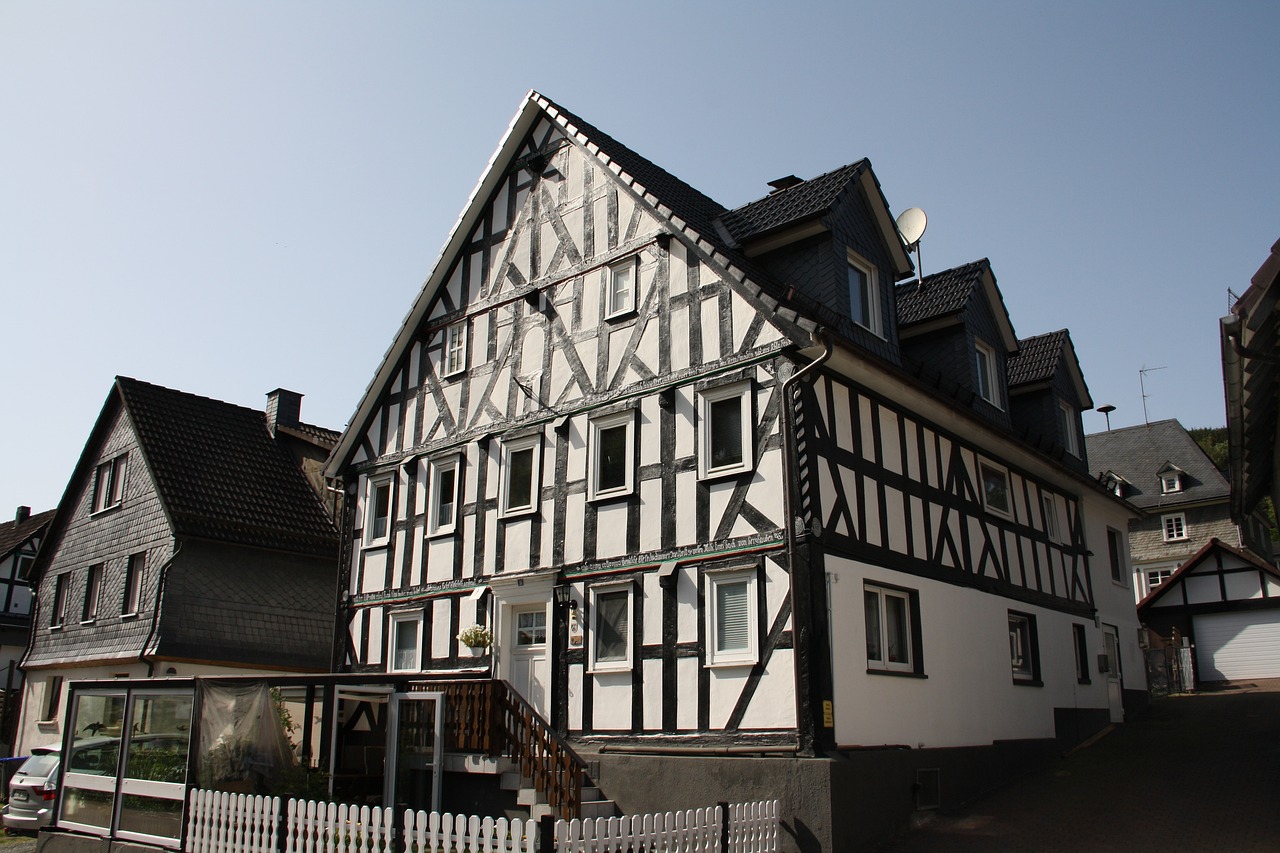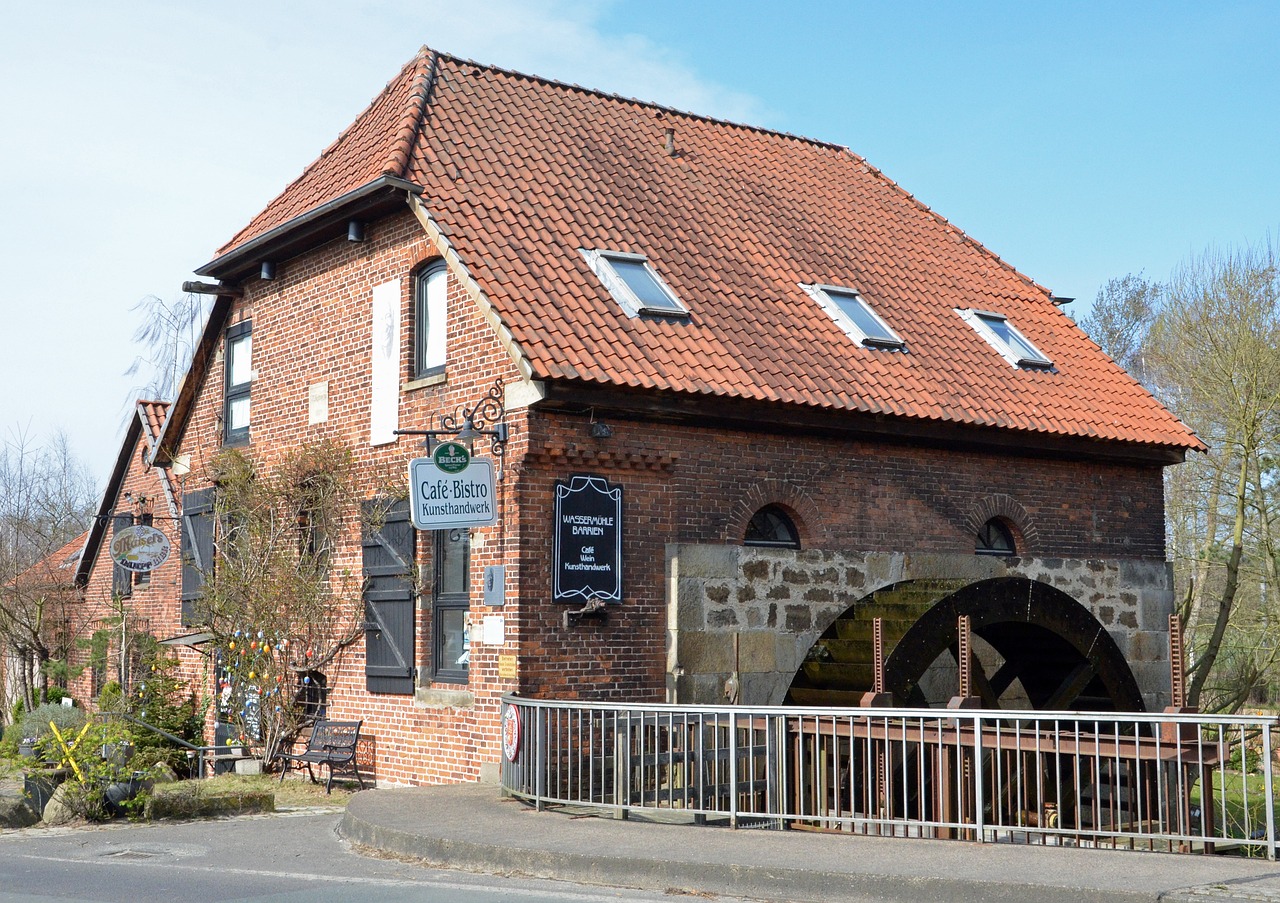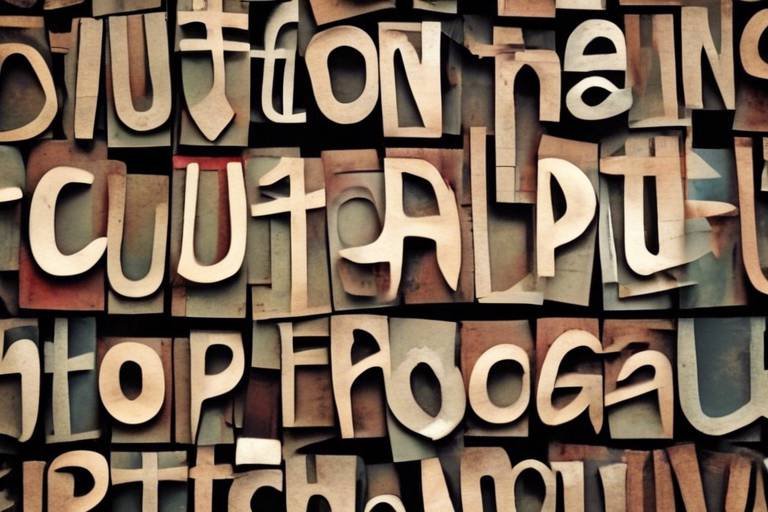Reviving Lost Traditions - The Importance of Cultural Heritage
Preserving and revitalizing cultural heritage is crucial in maintaining the identity, history, and traditions that define societies. It serves as a bridge between the past and the present, allowing future generations to connect with their roots and understand the evolution of their culture over time. Cultural heritage encompasses a wide range of elements, including tangible artifacts, intangible practices, rituals, languages, and customs that have been passed down through generations.
By safeguarding cultural heritage, we not only honor the legacy of our ancestors but also contribute to the richness and diversity of our global heritage. It is through the preservation of traditional crafts, skills, and knowledge that we can ensure the continuity of cultural practices that have shaped our communities for centuries. These traditions are not just relics of the past but living expressions of our shared history, values, and beliefs.
Moreover, cultural heritage plays a vital role in fostering a sense of belonging and connection among individuals and communities. It provides a framework for understanding our place in the world and helps us forge meaningful relationships with others who share similar cultural backgrounds. By embracing our cultural heritage, we celebrate the unique contributions of each community to the tapestry of human civilization.
However, the task of preserving cultural heritage is not without its challenges. Neglect, urbanization, natural disasters, and conflicts pose significant threats to the survival of our heritage sites and traditions. As our world rapidly evolves, the need to protect and revitalize cultural heritage becomes increasingly urgent to ensure that future generations can inherit a world rich in diverse cultural expressions.
Reviving lost traditions is not just about preserving the past; it is about building a sustainable future that values and respects the cultural diversity that defines us as a global community. By investing in the conservation and promotion of cultural heritage, we can create opportunities for economic growth, sustainable tourism, and community development.
Through community engagement and active participation, individuals can take ownership of their cultural heritage and become stewards of their traditions. By sharing knowledge, skills, and experiences across generations, communities can ensure the transmission of cultural practices that might otherwise be lost to time.
Technological innovations have also played a crucial role in the conservation and documentation of cultural heritage. Digital tools and virtual platforms enable us to preserve and disseminate cultural artifacts and practices to a global audience, fostering greater awareness and appreciation for our shared heritage.
Educational initiatives and awareness programs are essential in promoting the value of cultural heritage and instilling a sense of pride and responsibility in preserving our shared legacy. By integrating cultural heritage into school curricula and public outreach campaigns, we can ensure that future generations are equipped with the knowledge and skills needed to safeguard our cultural treasures.
Global collaboration and partnerships are key to protecting and promoting cultural heritage on a larger scale. By working together across borders and sharing best practices, countries can leverage their collective resources and expertise to safeguard heritage sites and practices that are of universal value.
Reviving lost traditions is not just a nostalgic endeavor but a vital mission to ensure that our cultural heritage continues to inspire, educate, and unite us as a global community. By recognizing the importance of our shared past, we can pave the way for a more inclusive and sustainable future that celebrates the diversity and richness of human creativity.

The Role of Cultural Heritage
Cultural heritage plays a pivotal role in shaping societies and individuals, acting as a cornerstone that defines their identity and roots. It serves as a bridge between the past and the present, connecting people to their ancestors and traditions. Imagine cultural heritage as a time capsule, preserving the essence of bygone eras and passing down invaluable knowledge and customs to future generations.
Through cultural heritage, communities find a sense of belonging and continuity, fostering a shared history that unites them in a common narrative. It is like a tapestry woven with threads of stories, rituals, art, and beliefs that create a rich and diverse cultural landscape. By safeguarding cultural heritage, we not only honor our ancestors but also provide a legacy for our descendants to cherish and learn from.
However, the role of cultural heritage goes beyond personal and communal significance. It also contributes to the broader tapestry of humanity, showcasing the beauty and diversity of different cultures around the world. Just like a mosaic composed of various pieces, each unique aspect of cultural heritage adds depth and richness to the global cultural fabric, fostering mutual respect and understanding among nations.

Challenges in Preservation
Preserving cultural heritage poses numerous challenges that threaten the integrity and survival of traditional practices, artifacts, and knowledge passed down through generations. One of the primary obstacles is neglect, where historical sites, monuments, and cultural practices are left abandoned or uncared for, leading to their deterioration and potential loss. Additionally, the rapid pace of urbanization often results in the destruction or alteration of cultural landscapes and traditional structures to make way for modern development.
Another significant challenge in preserving cultural heritage is conflict, which can lead to deliberate destruction of cultural sites and artifacts as acts of war or terrorism. The impact of armed conflicts on cultural heritage is devastating, erasing valuable traces of history and identity. Furthermore, climate change poses a growing threat to cultural heritage through environmental degradation, natural disasters, and rising sea levels that endanger coastal heritage sites.
Addressing these challenges requires a multi-faceted approach that combines awareness raising, advocacy for policy support, and community engagement in safeguarding cultural heritage. By recognizing the importance of preserving our cultural legacy, we can overcome these obstacles and ensure the continued existence of our shared history and traditions for generations to come.

Revitalizing Traditional Crafts
Revitalizing traditional crafts is crucial in preserving cultural heritage and ensuring the continuity of age-old traditions that define a community's identity. These crafts are not just products; they are embodiments of history, skills, and stories passed down through generations. By reviving traditional crafts, we breathe new life into forgotten practices, honoring the craftsmanship of our ancestors and celebrating the uniqueness of cultural diversity.
One way to revitalize traditional crafts is through **skill-sharing workshops** and **apprenticeship programs**. By engaging experienced artisans as mentors and encouraging the younger generation to learn these crafts, we can ensure that the knowledge and techniques are preserved and passed on. This hands-on approach fosters a sense of pride and accomplishment among participants, instilling a deeper appreciation for the artistry and craftsmanship involved.
Moreover, **integrating traditional crafts into modern markets** can help sustain these practices economically. By adapting traditional designs to contemporary tastes and promoting them through online platforms or artisan markets, we can create new avenues for artisans to showcase their skills and reach a broader audience. This not only supports the livelihoods of artisans but also introduces these unique crafts to a global market, fostering cultural exchange and appreciation.
Collaboration between **local communities and governmental bodies** is essential in providing support and resources for traditional craftsmen. Initiatives such as **craft fairs**, **cultural festivals**, and **artisan cooperatives** can serve as platforms for artisans to showcase their work, interact with customers, and network with other craftsmen. These events not only promote traditional crafts but also create a sense of community pride and solidarity, reinforcing the significance of cultural heritage in the fabric of society.
Preserving traditional crafts is not just about safeguarding tangible artifacts; it is about **preserving intangible heritage** - the stories, skills, and values embedded in these crafts. By revitalizing traditional crafts, we not only ensure the survival of cultural practices but also enrich our lives with the beauty and richness of diverse cultural expressions.

Impact on Tourism and Economy
Preserving cultural heritage not only holds intrinsic value in terms of identity and history but also carries significant impacts on tourism and the economy. When a community safeguards its cultural heritage, it creates a unique selling point that attracts tourists seeking authentic experiences and a glimpse into the past.
Imagine walking through cobblestone streets lined with ancient buildings, each telling a story of bygone eras. Tourists are drawn to such destinations, eager to immerse themselves in the rich tapestry of traditions and customs that have been preserved over generations. This influx of visitors brings economic benefits to the local community, from increased revenue in hospitality and retail sectors to the growth of cultural tourism enterprises.
Moreover, the preservation of cultural heritage can have a ripple effect on the economy, creating sustainable livelihoods for artisans, craftsmen, and cultural practitioners. By reviving traditional crafts and skills, communities can tap into a niche market that values authenticity and craftsmanship, thus contributing to the local economy's diversification and resilience.
Furthermore, heritage sites and cultural festivals become magnets for cultural tourism, stimulating economic activities in the form of souvenir shops, local eateries, and guided tours. This not only injects revenue into the community but also fosters a sense of pride and ownership among residents, who see the tangible benefits of preserving their cultural heritage.

Community Engagement and Participation
Community engagement and participation play a pivotal role in the preservation of cultural heritage. When communities actively participate in safeguarding their traditions and practices, it fosters a sense of ownership and pride in their cultural identity. Through knowledge sharing and intergenerational transmission, valuable skills and customs are passed down from one generation to the next, ensuring their continuity and relevance in a rapidly changing world.
Furthermore, community involvement creates a strong bond among individuals, strengthening social cohesion and unity. By coming together to protect and promote their cultural heritage, communities build a collective resilience against external threats such as neglect, urbanization, and conflict. This shared responsibility instills a sense of belonging and connection, reinforcing the importance of preserving the past for the benefit of future generations.
In many cases, community engagement goes beyond mere preservation efforts and extends to the revitalization of traditional practices and crafts. Through workshops, festivals, and collaborative projects, communities breathe new life into age-old traditions, ensuring that these cultural expressions remain vibrant and relevant in contemporary society. This not only enriches the cultural landscape but also contributes to the economic empowerment of artisans and craftsmen, creating sustainable livelihoods within the community.
Moreover, community engagement acts as a catalyst for social change and innovation. By embracing their cultural heritage, communities can leverage their unique identity to attract tourists, stimulate local economies, and promote cultural diversity. This not only brings economic benefits but also fosters a sense of pride and appreciation for the rich tapestry of traditions that make each community distinct and valuable.

Technological Innovations in Conservation
Exploring the significance of preserving and revitalizing cultural heritage to maintain identity, history, and traditions for future generations.
Understanding how cultural heritage shapes societies and individuals, fostering a sense of belonging and connection to the past.
Discussing the obstacles and threats faced in safeguarding cultural heritage, including neglect, urbanization, and conflict.
Highlighting the importance of reviving traditional crafts and skills to ensure their continuity and promote cultural diversity.
Examining how preserving cultural heritage can drive tourism, boost local economies, and create sustainable livelihoods.
Exploring the role of communities in preserving cultural heritage through active involvement, knowledge sharing, and intergenerational transmission.
Technological advancements have revolutionized the field of cultural heritage conservation. From 3D scanning and virtual reality to drones and artificial intelligence, these innovations are aiding in the documentation, preservation, and restoration of historical sites and artifacts. Digital databases and online platforms allow for the widespread dissemination of cultural knowledge, reaching a global audience and ensuring the legacy of heritage sites is preserved for future generations.
Discussing the importance of educational initiatives and awareness programs in promoting the value of cultural heritage and fostering appreciation.
Emphasizing the need for international cooperation and partnerships to protect and promote cultural heritage on a global scale.

Education and Awareness Programs
Education and awareness programs play a crucial role in preserving and promoting cultural heritage. By educating individuals about the significance of their heritage, these programs help instill a sense of pride and appreciation for traditional practices and customs. Through interactive workshops, seminars, and exhibitions, people can learn about the history behind cultural artifacts and traditions, fostering a deeper understanding of their roots.
Furthermore, educational initiatives aimed at schools and universities can integrate cultural heritage into the curriculum, ensuring that younger generations are exposed to their heritage from an early age. By incorporating hands-on activities and field trips to historical sites, students can engage with their cultural legacy in a tangible way, making the learning experience more impactful and memorable.
Awareness programs, on the other hand, focus on reaching a wider audience and raising consciousness about the importance of preserving cultural heritage. Through social media campaigns, public events, and cultural festivals, these programs aim to spark interest and involvement in heritage conservation efforts. By showcasing the beauty and value of traditional crafts and practices, awareness programs seek to attract support from the broader community.
Collaboration with local communities and cultural organizations is essential in implementing effective education and awareness programs. By involving stakeholders in the planning and execution of these initiatives, a sense of ownership and responsibility is fostered, leading to more sustainable outcomes. Through partnerships with schools, museums, and heritage sites, these programs can reach diverse audiences and create a ripple effect of appreciation for cultural heritage.

Global Collaboration for Preservation
Global Collaboration for Preservation plays a crucial role in safeguarding and promoting cultural heritage on a worldwide scale. By fostering international cooperation and partnerships, countries can combine their efforts to protect valuable cultural assets and traditions for future generations. This collaboration involves sharing best practices, resources, and expertise to address common challenges faced in preserving cultural heritage.
Through global collaboration, countries can collectively work towards developing sustainable strategies for the conservation and promotion of cultural heritage. By pooling together knowledge and resources, nations can implement effective measures to combat threats such as looting, illicit trafficking, natural disasters, and armed conflicts that endanger cultural sites and artifacts.
International partnerships also facilitate the exchange of ideas and innovations in cultural heritage preservation. By engaging in joint projects and initiatives, countries can leverage technological advancements and digital tools to document, conserve, and disseminate cultural heritage in a more efficient and comprehensive manner.
Furthermore, global collaboration fosters mutual understanding and respect among nations, promoting cultural diversity and dialogue. By recognizing the significance of each other's heritage, countries can build stronger relationships based on shared values and appreciation for the richness of global cultural heritage.
Frequently Asked Questions
- What is cultural heritage?
Cultural heritage refers to the legacy of physical and intangible aspects of a society that are inherited from past generations, maintained in the present, and passed on to future generations. It includes traditions, customs, beliefs, rituals, artifacts, historical sites, and other elements that shape a community's identity and history.
- Why is preserving cultural heritage important?
Preserving cultural heritage is crucial for maintaining a sense of identity, fostering pride in one's roots, and connecting present and future generations to their history. It helps in promoting cultural diversity, enhancing social cohesion, and contributing to the overall well-being of societies.
- What are the challenges faced in safeguarding cultural heritage?
Challenges in preserving cultural heritage include neglect, urbanization, natural disasters, armed conflicts, lack of funding, and inadequate awareness. These factors pose threats to historical sites, traditional practices, and indigenous knowledge, making conservation efforts essential.
- How can individuals contribute to the preservation of cultural heritage?
Individuals can contribute to cultural heritage preservation by supporting local artisans, visiting heritage sites responsibly, participating in community events, advocating for heritage protection, and educating themselves and others about the significance of cultural traditions.


















